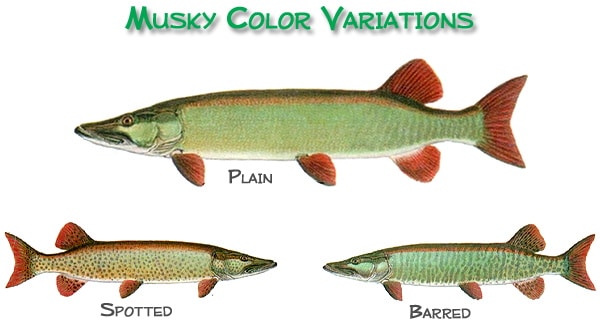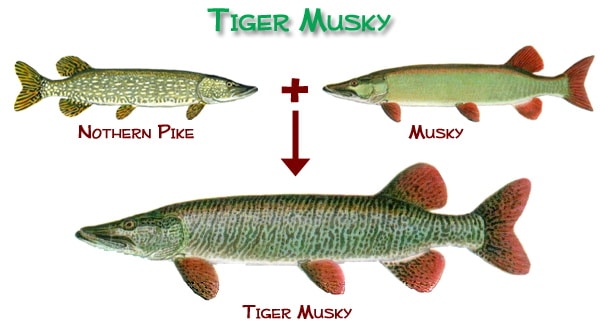Muskellunge - AKA: Musky & Muskie
Esox Masquinongy

The musky is the largest gamefish in Wisconsin, with the exception of Sturgeon. It can be caught from inland lakes, rivers and even great lakes like Lake Michigan & Lake Superior. Fishing techniques include trolling, casting and live bait. Musky is an extremely exciting fish to catch. Johnny’s Ultimate Musky Fishing Guide Service does practice ‘Catch & Release’ to help preserve the future of Musky Fishing.
Related Species
Northern pike; pickerel; tiger musky
Also Known As
Muskie, musky
Coloration
Greenish to light brown to silver; Great Lakes strains are more silver in color
Field Marks
Numerous canine teeth; 6-9 pores on underside of lower jaw; dark marks on a light background (compare northern pike).
Habitat
Lakes, reservoirs and streams with abundant vegetation or similar cover
Feeding Habits
The muskellunge targets other fish as the staples of its diet, but it will eat anything it can fit into its mouth: ducks, mice, amphibians, snakes.
Comments
A true water wolf. Muskie fishing quickly becomes an obsession to those who pursue it, even though results may be few.
WI Record
69 lb. 11 oz.63.5″ 10/20/49 Chippewa Flowage, Sawyer County

Distribution
In North America, musky are Native to St. Lawrence River – Great Lakes, Hudson Bay (Red River), and Mississippi River basins. Introduced elsewhere in the USA. Native populations are protected in portions of Tennessee and Ohio.
Spawning
The muskie spawns when the water temperature is 48 to 59 degrees, about two weeks later than the northern pike. A 40-pound female can produce more than 200,000 eggs. They generally spawn twice, the second time about 14 days after the first time. Unlike the northern pike’s adhesive eggs, which cling to vegetation, the muskie’s eggs settle to the bottom, rather than the weedy in-shore areas northern pike use. This separation of spawning areas apparently prevents northern pike fingerlings from preying on newly hatched muskie fry. In other circumstances, however, late-spawning northern pike have been observed actively spawning with muskie; the hybrid offspring is called a “tiger muskie.”

Related Species
Northern pike; pickerel; muskellunge
AKA
None
Coloration
Light colored with brownish fins and green vertical bars on sides
Field Marks
Vertical green bands on flanks
Habitat
Similar to muskellunge
Feeding Habits
Like other members of the Esox family, the tiger muskie is an opportunistic predator and a solitary hunter.
Comments
The tiger muskie is a northern pike/muskellunge hybrid and is widely stocked in some areas.
WI Record
51 lb. 3 oz. 54″ 7/16/19 Lake Vieux Desert, Vilas County
More Information
The musky long has been recognized as special – a large, rare trophy. Its habitat requirements are more particular than that of its close relative, the northern pike. In many areas, the musky’s existence is rather tenuous – threatened by fishing, habitat loss, and competition from other fish species. So the goal of muskie management is to create or protect self-sustaining populations and to produce a few large fish for the angler skilled and dedicated enough to catch them.
For even more information check out the muskellunge page on Wikipedia.
